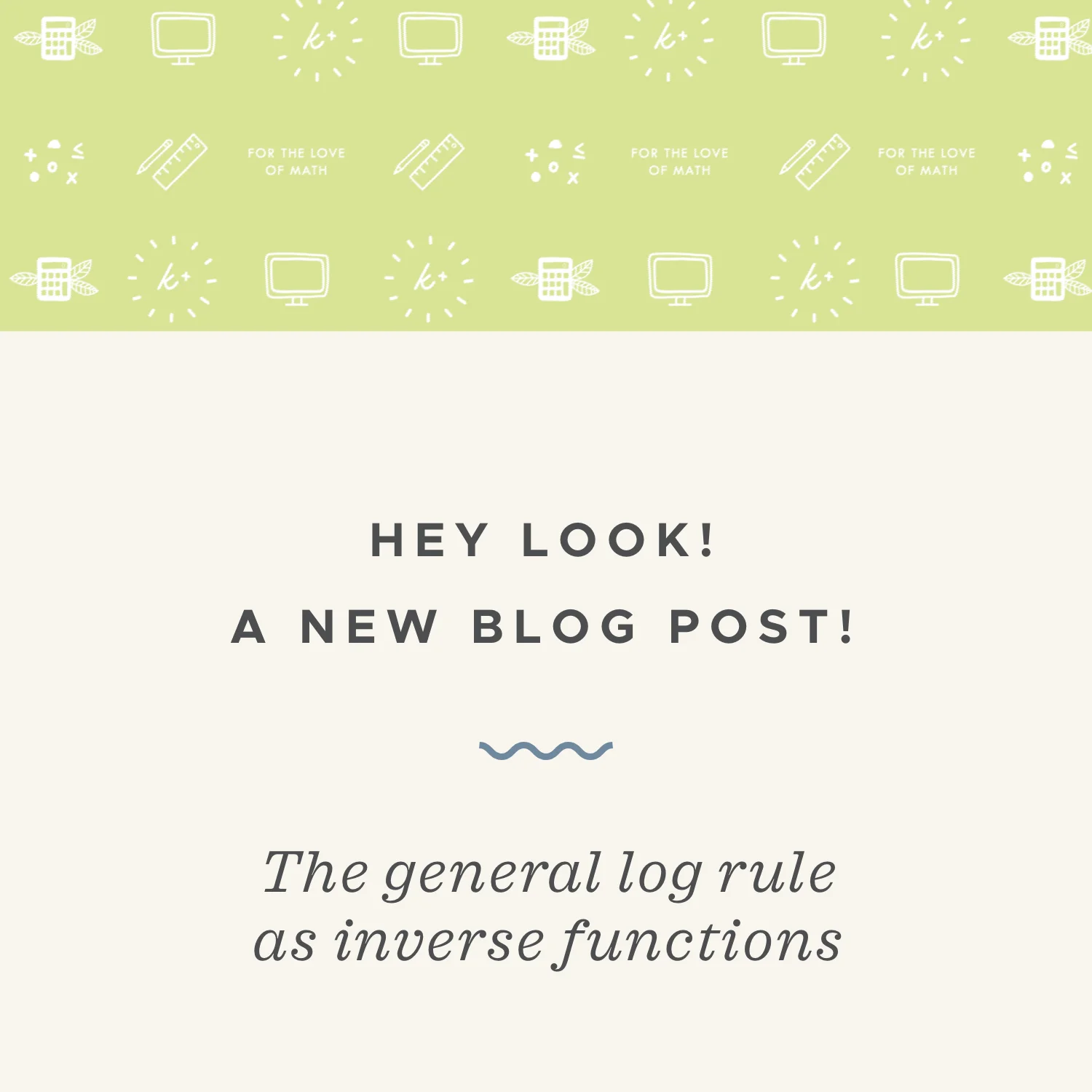When it comes to graphing exponential functions, I like to follow a very consistent plan: 1) Plug in x=100 and x=-100 to see what the function is doing as x starts getting close to -infinity or +infinity. 2) One of these will result in an infinite value, the other will give a real-number value. The real-number value is the horizontal asymptote of the exponential function. 3) Plug in a few easy-to-calculate points, like x=-1, 0, and 1 in order to get a couple of points that we can plot. 4) Connect the points with an exponential curve, following the horizontal asymptote.
Read MoreThe general log rule relates the logarithmic function to an exponential function. It tells us that log_a(y)=x and a^x=y are equivalent, and similarly, that log_a(x}=y and a^y=x are equivalent.
Read MoreThis is the rule we use when we’re dividing one exponential expression by another exponential expression. The quotient rule tells us that we have to subtract the exponent in the denominator from the exponent in the numerator, but the bases have to be the same.
Read MoreYou can always evaluate logs using the general log rule, but sometimes, depending on the value of the base and the argument, simplifying the exponential expression can be a little tricky.
Read More





